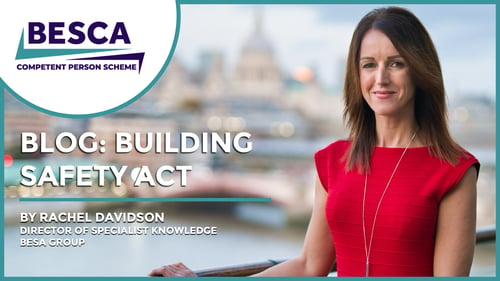With the building inspection regime on the verge of collapse is this really the right time to be relaxing the rules for building conversions?
There is a strong feeling of déjà vu about the government’s latest attempt to liberalise planning rules by expanding permitted development rights (PDR). This change is designed to make it easier to turn commercial buildings into homes by removing the need to apply for planning permission.
While the principle has merit, there is a very real risk that this will create a whole new generation of ‘slum’ dwellings in inner city locations – and make only a limited impact on the housing shortage. And, in any case, we have been down this road before which is why the housing charity Shelter warned this could lead to even more people living in “squalid conditions”.
The problem is that many of the commercial properties targeted by the policy are simply not suitable for conversion.

About 100,000 homes have been created out of former commercial buildings since PDR was first liberalised 11 years ago by David Cameron’s government and now current housing minister Michael Gove wants to expand their reach further to take in more large office blocks and disused shops.
Many of these could, on paper, be successfully converted but as we have seen too often over the past 11 years many could well end up as small, poorly ventilated homes with little outside access – many PDR properties don’t even have windows.
The government was forced to introduce new minimum sizes and legislate for access to natural light but it seems that lesson has not been learned and the new proposal is fraught with quality risks.
Health and wellbeing
Furthermore, since PDR was first extended, we have had the Grenfell Tower tragedy in 2017, a pandemic that highlighted the importance of good quality indoor air quality (IAQ) to protect human health and well-being (including mental health), and a dramatic increase in the number of homes suffering from condensation and mould.
One particularly appalling apartment in Rochdale led directly to the death of two-year-old Awaab Ishak and the subsequent creation of Awaab’s Law to hold landlords to account if they failed to address poor living conditions.
The Building Safety Act came into force in 2022 as a direct result of Grenfell and has led to significant changes to the building regulations which apply to all buildings and are closely monitored by our emergency services.
All these developments came about because of the limitations of a development process that left too many building occupants unsafe and living in sub-standard buildings that actively contributed to poor health and social mobility.
One of the ‘quality control’ measures introduced by the Health & Safety Executive, which is overseeing the Act, was to turn building control into a regulated profession to ensure inspectors were professionally competent. This requires an estimated 4,500 building control officers (BCOs) to be registered and certified by April 6th this year.
However, this has created a new crisis with local authorities saying they will not be able to carry out inspections or serve stop-go notices from that date because very few of their BCOs are registered.
Local Authority Building Control (LABC), which represents BCOs, has called for a six-month delay so that inspections can continue while more of its members are registered and assessed, but this is shaping up to be a much longer-term challenge. Several industry observers point out that the building control regime has been under-resourced for years and many BCOs are choosing to retire rather than go through the new competence assessment process.
So, while the housing minister is pushing for legislation that would allow more commercial buildings to become residential properties without planning permission, regardless of their size, we have a rapidly crumbling quality control system that could lead to even more sub-standard buildings.

Acceptable
“It feels like we didn’t learn the lesson. It was the bigger buildings that were lower quality in many cases,” said Professor Ben Clifford from University College London whose study for the government found that only 22% of homes built under PDR between 2015 and 2018 met acceptable space and access standards.
The government is under huge pressure to build more homes and with more commercial buildings becoming available for conversion following the collapse of high street shopping and the changes in working patterns that have freed up office space, PDR makes sense.
There is clearly an opportunity to generate more homes and give more people the opportunity to buy or rent good quality accommodation, but all the pieces need to be in place and quality control must be a top priority. We cannot afford to ignore the lessons of Grenfell, Rochdale, and Covid
If we have learned one thing since 2013, surely, it’s that every building occupant deserves to live in a safe, good quality home. That, after all, is the driving principle of the Building Safety Act and needs to be enshrined as part of the Grenfell legacy.
For more information about building safety visit the BESA Hub.

